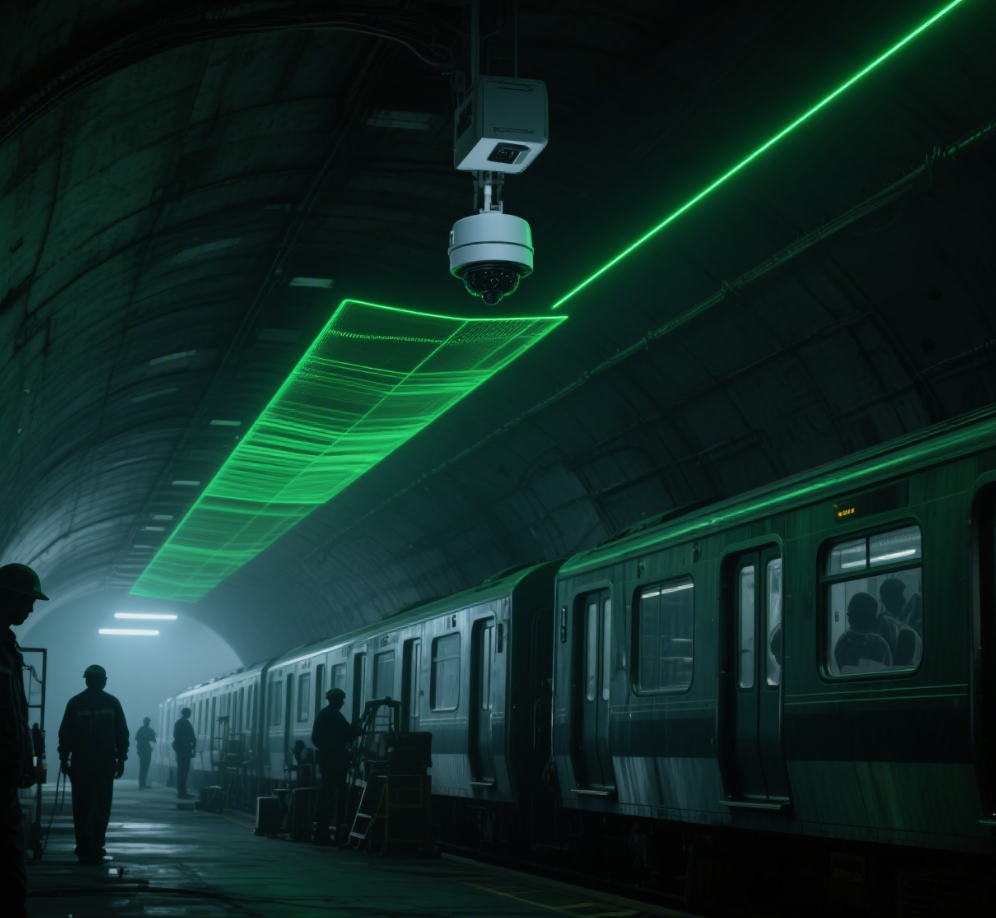How Can Millimeter-Wave Radar Enhance Safety in Underground Spaces?
Millimeter-wave radar (mmWave radar) is rapidly emerging as a critical technology for tunnel and underground safety. Subways, underground parking lots, and mines often face challenges such as poor lighting, dense dust, and complex layouts. Traditional cameras and optical sensors struggle to provide reliable monitoring under these conditions.
Millimeter-wave radar combines strong penetration, high-resolution detection, and precise distance measurement, enabling real-time tracking of personnel, vehicles, and environmental conditions. By providing actionable data, radar helps facility operators maintain safety, optimize workflows, and reduce accident risks.
Can Millimeter-Wave Radar Detect Personnel and Vehicles in Real Time?
Radar systems can accurately detect moving objects within underground spaces, allowing continuous monitoring of personnel and vehicles.
-
In subway stations, mmWave radar tracks crowd distribution and unauthorized access to restricted areas, reducing the risk of accidents and improving operational safety.
-
In underground parking facilities, radar monitors vehicle speed, position, and trajectory to prevent collisions and congestion, supporting intelligent parking guidance.
-
In mines, radar tracks miners’ positions in real time, even under poor lighting and heavy dust, enhancing workflow and ensuring personnel safety.
Internal link: Learn more about Linpowave’s V200 series radar for industrial applications.
Is Early Detection of Environmental Hazards Possible with Radar?
Millimeter-wave radar can also detect environmental anomalies to provide early warnings of potential hazards.
-
Radar can sense changes in smoke and dust concentrations, offering early fire or explosion alerts.
-
It can detect obstacles and falling objects within tunnels or mines, reducing the risk of injury.
-
Combined with temperature, humidity, and ventilation monitoring, radar contributes to optimized underground environmental management.
External link: For fire safety standards, see NFPA Fire Safety Guidelines.
Why Is Radar More Reliable Than Cameras or Optical Sensors?
Millimeter-wave radar provides several advantages over traditional optical solutions.
-
It operates effectively in complete darkness, where cameras fail.
-
It is highly resistant to interference from dust, fog, and artificial lighting, ensuring consistent monitoring.
-
Radar requires minimal maintenance compared to cameras and infrared sensors, lowering long-term operating costs.
-
These capabilities make mmWave radar a dependable solution for continuous underground safety monitoring.
Internal link: Check Linpowave V300 radar solutions for advanced monitoring.
How Can Radar Enable Data-Driven Smart Management?
Radar data can drive intelligent management and operational improvements in underground environments.
-
Trajectory analysis of personnel and vehicles allows operators to optimize routes, traffic flow, and scheduling.
-
Abnormal behavior detection triggers timely alerts to prevent potential accidents.
-
Radar can integrate with automated lighting, ventilation, and alarm systems for immediate response during emergencies.
-
Historical data collected by radar supports safety evaluations, construction planning, and long-term traffic optimization.
External link: See IEEE research on smart underground monitoring.
Are There Real-World Applications and Results?
Millimeter-wave radar has been successfully deployed in multiple underground scenarios:
-
Subway projects using radar have reduced incidents during low-light and high-dust conditions by over 40%.
-
Underground parking systems integrated with radar have minimized collisions and traffic congestion.
-
In mining operations, real-time tracking of miners across the entire site has improved safety metrics and operational efficiency.
Internal link: Learn more in Linpowave’s Industrial Radar Blog.
Conclusion: Could Millimeter-Wave Radar Be the Future of Underground Safety?
Millimeter-wave radar is transforming how underground spaces are monitored. Its all-weather, high-precision, non-optical detection enables real-time personnel and vehicle tracking, environmental hazard detection, and data-driven management. As technology advances and costs decrease, mmWave radar applications in subways, parking lots, and mines are expected to expand, offering reliable, proactive safety solutions.
The evidence suggests that millimeter-wave radar is becoming an essential component of modern underground safety infrastructure. Its combination of operational reliability, environmental adaptability, and data-driven insights positions it as the future standard for tunnels, subways, and mining operations.



